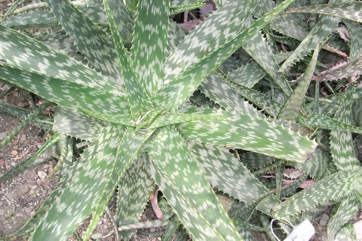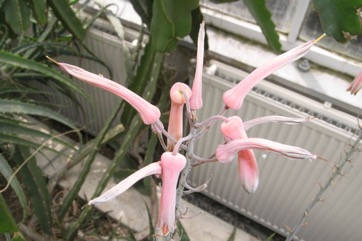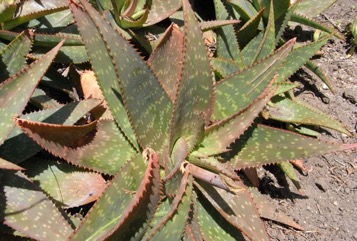Broad-leaved Aloe

It is a tropical and subtropical plant. It grows naturally in sub desert scrub. It suits areas there rainfall is 250-750 mm per year. It can grow where temperatures are high in summer and where it snows in winter. It grows from sea level to 2,000 m altitude. It needs well drained soil. It can grow in arid places.
Also known as:
Bontaalwyn, Emahala, Navuria, Seepaalwyn
Synonyms
- Aloe perfoliata saponaria Ait.
- Aloe umbellata DC.
- Aloe leptophylla Brown & Baker
Edible Portion
- Leaves, Flowers
Where does Broad-leaved Aloe grow?
Found in: Africa, Australia, Canada, East Africa, Eswatini, Kenya, Lesotho, North America, Slovenia, South Africa, Southern Africa, Sudan, Swaziland, Tanzania, Tasmania, Uganda, Zambia, Zimbabwe
Notes: There are about 350-400 Aloe species. Also put in the family Aloaceae. Also put in the family Asphodelaceae.
Growing Broad-leaved Aloe
Cultivation: It is grown from seed. Seed are sprinkled evenly over the surface of a well prepared seed bed. Plants can be transplanted when 1 year old.
Edible Uses: The flowers are eaten. They are cooked with groundnuts or added to soups. The flowers can be dried and kept for later use.
Nutrition Info
per 100g edible portion| Edible Part | Energy (kcal) | Protein (g) | Iron (mg) | Vitamin A (ug) | Vitamin c (mg) | Zinc (mg) | % Water |
|---|---|---|---|---|---|---|---|
| Leaves | - | - | - | - | - | - | |
| Flowers | - | - | - | - | - | - |
Broad-leaved Aloe Photos



References
Brickell, C. (Ed.), 1999, The Royal Horticultural Society A-Z Encyclopedia of Garden Plants. Convent Garden Books. p 101
FAO, 1988, Traditional Food Plants, FAO Food and Nutrition Paper 42. FAO Rome p 68
Fox, F. W. & Young, M. E. N., 1982, Food from the Veld. Delta Books. p 255
Jardin, C., 1970, List of Foods Used In Africa, FAO Nutrition Information Document Series No 2.p 53
Lazarides, M. & Hince, B., 1993, Handbook of Economic Plants of Australia, CSIRO. p 15
Martin, F.W. & Ruberte, R.M., 1979, Edible Leaves of the Tropics. Antillian College Press, Mayaguez, Puerto Rico. p 202
Morley, B.D., & Toelken, H.R., (Eds), 1983, Flowering Plants in Australia. Rigby. p 325
Ogle, B. M. & Grivetti, L. E., 1984, Legacy of the Chameleon: Edible Wild Plants in the Kingdom of Swaziland, Southern Africa. A Cultural, Nutritional Study. Part 4 - Nutritional Analysis and Conclusions. Ecology of Food and Nutrition. Vol 17, pp 431-64
Rubaihayo, E. B., Conservation and use of traditional vegetables in Uganda. Bioversity International.
Trans. Linn. Soc. London 7:17. 1804